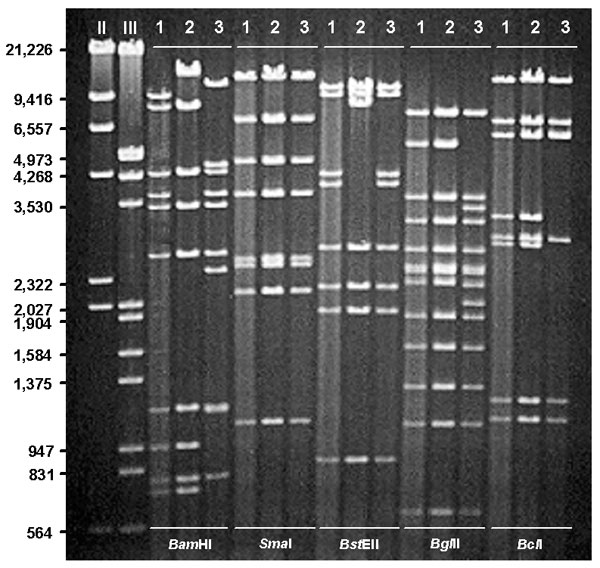Volume 8, Number 3—March 2002
Research
Molecular Epidemiology of Adenovirus Type 7 in the United States, 1966–20001
Figure

Figure. Restriction profiles of representative human adenovirus (Ad) genome types Ad7b (1), Ad7d2 (2), and Ad7h (3) after digestion with selected enzymes, BamHI, Sma I, BstEII, BglII, and BcII. DNA markers II (λ HindIII) and III (λ HindIII/EcoRI).
1These data were presented in part at the International Conference on Emerging Infectious Diseases, July 16-19, 2000, Atlanta, GA.
Page created: July 14, 2010
Page updated: July 14, 2010
Page reviewed: July 14, 2010
The conclusions, findings, and opinions expressed by authors contributing to this journal do not necessarily reflect the official position of the U.S. Department of Health and Human Services, the Public Health Service, the Centers for Disease Control and Prevention, or the authors' affiliated institutions. Use of trade names is for identification only and does not imply endorsement by any of the groups named above.